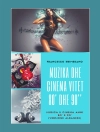First full comprehensive guide to one of the most important genres of music in the Middle Ages.
Motets constitute the most important polyphonic genre of the thirteenth and fourteenth centuries. Moreover, these compositions are intrinsically involved in the early development of polyphony. This volume – the first to be devotedexclusively to medieval motets – aims to provide a comprehensive guide to them, from a number of different disciplines and perspectives. It addresses crucial matters such as how the motet developed; the rich interplay of musical, poetic, and intertextual modes of meaning specific to the genre; and the changing social and historical circumstances surrounding motets in medieval France, England, and Italy. It also seeks to question many traditional assumptions and received opinions in the area.
The first part of the book considers core concepts in motet scholarship: issues of genre, relationships between the motet and other musico-poetic forms, tenor organization, isorhythm, notational development, social functions, and manuscript layout. This is followed by a series of individual case studies which look in detail at a variety of specific pieces, compositional techniques, collections, and subgenres.
JARED C. HARTT is Associate Professor of Music Theory at the Oberlin College Conservatory of Music.
Contributors: Margaret Bent, Jacques Boogaart, Catherine A. Bradley, Alice V. Clark, Suzannah Clark, Karen Desmond, Lawrence Earp, Sarah Fuller, John Haines, Jared C. Hartt, Elizabeth Eva Leach, Dolores Pesce, Gaël Saint-Cricq, Jennifer Saltzstein, Matthew P. Thomson, Stefan Udell, Anna Zayaruznaya, Emily Zazulia
Tabella dei contenuti
Introduction: Approaching Medieval Motets – Jared C. Hartt
The Genre(s) of Medieval Motets – Elizabeth Eva Leach
Origins and Interactions: Clausula, Motet, Conductus – Catherine Bradley
Tracing the Tenor in Medieval Motets – Alice V. Clark
Isorhythm – Lawrence Earp
Notations – Karen Desmond
Thirteenth-Century Motet Functions: Views through the Lens of the
Portare Motet Family – Dolores Pesce
A Prism of its Time: Social Functions of the Motet in Fourteenth-Century France – Jacques Boogaart
Motets, Manuscript Culture, Mise-en-page – John Haines and Stefan Udell
Clerics, Courtiers, and the Vernacular Two-Voice Motet: The Case of
Fines amouretes/Fiat and the
Roman de la poire – Jennifer Saltzstein
When Words Converge and Meanings Diverge: Counterexamples to Polytextuality in the Thirteenth-Century Motet – Suzannah Clark
Motets in Chansonniers and the Other Culture of the French Thirteenth-Century Motet – Gaël Saint-Cricq
Building a Motet around Quoted Material: Textual and Musical Structure in Motets based on Monophonic Songs – Matthew P. Thomson
The Duet Motet in England: Genre, Tonal Coherence, Reconstruction – Jared C. Hartt
Materia Matters: Reconstructing
Colla/Bona – Anna Zayaruznaya
Machaut’s Motet 10 and Its Interconnections – Margaret Bent
A Motet Conceived in Troubled Times: Machaut’s Motet 22 – Sarah Fuller
A Motet Ahead of Its Time? The Curious Case of
Portio nature/Ida capillorum – Emily Zazulia
Bibliography of Works Cited
Circa l’autore
MARGARET BENT is an Emeritus Fellow of All Souls College, Oxford.












